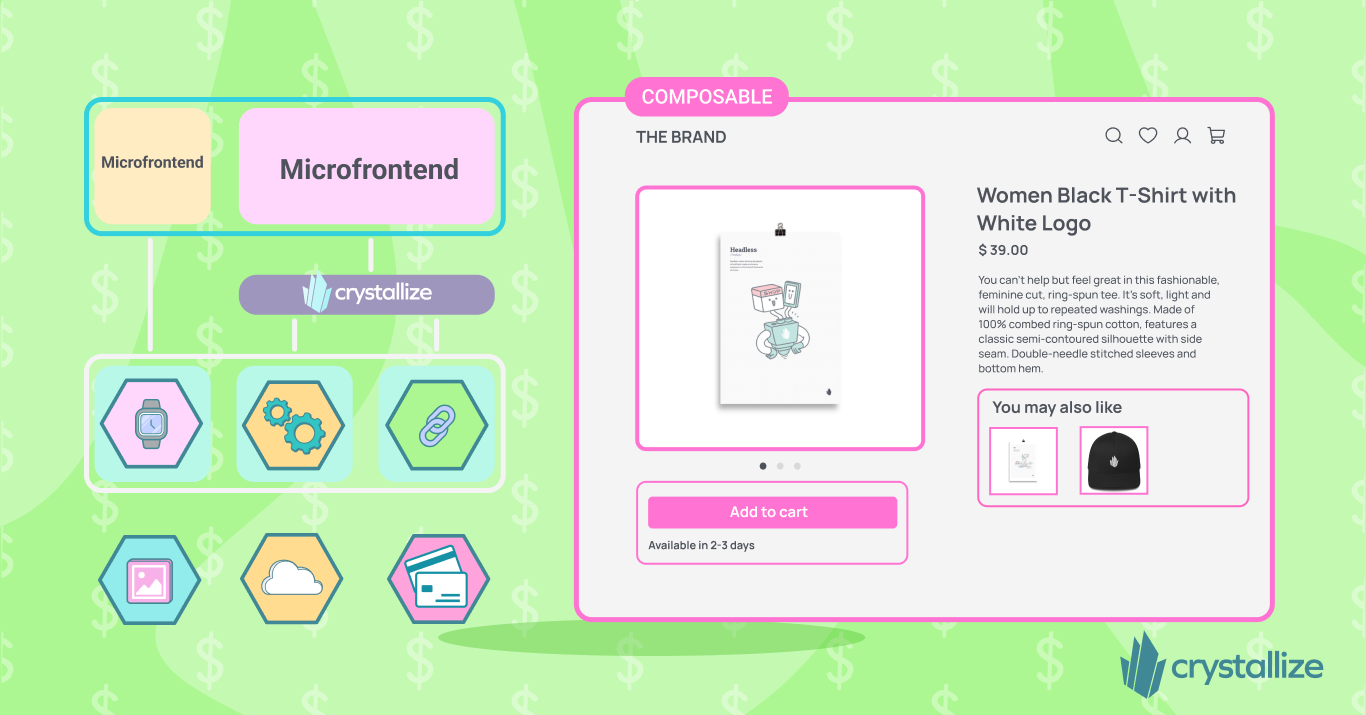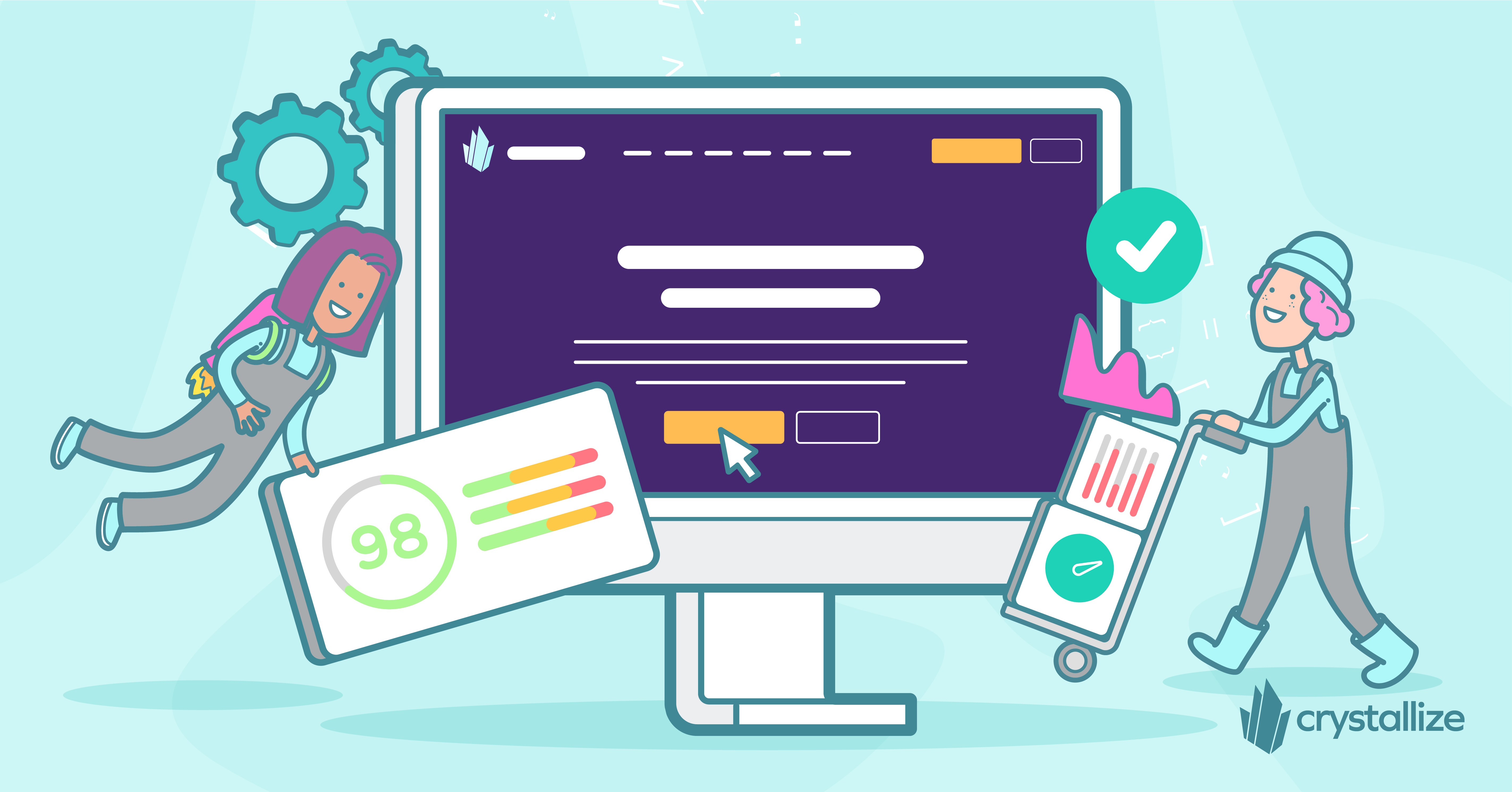Headless Tech Stack: A Quick Rundown
In modern web development, you're bound to hear the term headless thrown around more often than not, especially in the growing landscape of content-driven applications and e-commerce platforms.

If you've worked with platforms such as WordPress, Shopify, Wix, Magento, PrestaShop, BigCommerce, etc., you’re probably familiar with their all-in-one structure. These systems handle everything—from managing your content or products to rendering the front end that users interact with. This monolithic approach has benefits, but since websites and applications are becoming more complex, a new way of thinking and architecture emerges as a game-changer: the headless tech stack.
In a headless system, the back end (where your content or product data lives) is decoupled from the front end (how it's presented). This separation offers developers more control, flexibility, and freedom to use modern frameworks such as Next.js, Astro, Remix, or Vue.js to craft personalized user experiences. For eCommerce and CMS veterans, this may sound like a giant leap from the one-size-fits-all platforms, but it’s a shift that enables more scalability and better performance across multiple channels.
If you feel too comfortable with the world of all-inclusive platforms, take a leap of faith (Assaisns Crede pun intended) with this guide. We will introduce you to the concept of headless architecture, explain why it’s gaining traction, explain how it could open up new opportunities in your development workflow, and discuss its benefits for your business.
Let’s explore what makes a tech stack headless and why it’s a game-changer for developers (and businesses) of all levels.
What Does "Headless" Mean?
The back end (often called the "body") is where all your content and/or product data lives, but it doesn’t dictate how that information is displayed. Instead, the data is provided through APIs, allowing you to build your front-end experience using any framework or technology you choose.
This decoupling is what gives headless architecture its flexibility. It enables developers to create custom front-end interfaces for various channels, such as websites, mobile apps, or IoT devices.
Key Components of a Headless Tech Stack
So, a headless tech stack is all about separating your front-end and back-end systems. Unlike monolithic platforms, where the front and back end are fused, a headless architecture separates data management and presentation responsibilities.
Headless CMS/Commerce or API (the "Body")
Your content or product management system is at the core of any headless tech stack. This "body" doesn’t care about how data is presented to your audience—it simply serves data through APIs, which any front-end can consume. Whether you’re managing blog posts, product inventories, or customer accounts, these APIs are your data pipelines.
For example, a headless CMS like Strapi or DatoCMS provides content managers and editors with a dashboard to create and update content. On the eCommerce side, platforms like Crystallize allow store owners to manage their catalog and process orders. Still, they don’t dictate how this information will be displayed to users.
API-first Approach
One key advantage of the headless approach is its reliance on APIs to bridge the back- and front-end gaps. APIs allow you to request only the data you need when needed, making the system more efficient and scalable. As your project grows, you can integrate additional services or microservices.
For instance, your Next.js front-end might pull content from a headless CMS like DatoCMS, while product data and customer information are fetched from a separate headless commerce platform like Crystallize. This modularity means you can mix and match tools, i.e., have best-of-breed tools that fit your specific needs (though, in this case, you might not need a separate CMS because you can manage your blog/marketing content in Crystallize as well…but that’s another story).
Front-End Frameworks (the "Head")
You can choose the best (or your favorite) tool on the front end for the job. Since the back end delivers data through APIs, your front end can be anything: a website built with Next.js, Astro, PHP, or a single-page application (SPA) powered by Vue.js.
Let us explain this with an in-house example. Imagine you're building a high-performance, custom eCommerce solution. Instead of relying on Shopify or Magento’s built-in front end, you opt for Crystallize for your back end. Crystallize handles product cataloging, subscriptions, and order processing, but you design the front end from scratch using Next.js.
With this simple setup, you’ve built the foundation of a headless store: Crystallize provides the back end for managing products, while Next.js powers your custom-built front end. From here, you can expand the store with more advanced features like filtering, product pages, and checkout flows, fully taking advantage of headless architecture's flexibility.
🤘Set up the same example for yourself in just a few minutes with our brand NEW Next js headless commerce boilerplate.
Front-End Frameworks (the "Head")
You can choose the best (or your favorite) tool on the front end for the job. Since the back end delivers data through APIs, your front end can be anything: a website built with Next.js, Astro, PHP, or a single-page application (SPA) powered by Vue.js. Let us explain this with an in-house example. Imagine you're building a high-performance, custom eCommerce solution. Instead of relying on Shopify or Magento’s built-in front end, you opt for Crystallize for your back end. Crystallize handles product cataloging, subscriptions, and order processing, but you design the front end from scratch using Next.js. With this simple setup, you’ve built the foundation of a headless store: Crystallize provides the back end for managing products, while Next.js powers your custom-built front end. From here, you can expand the store with more advanced features like filtering, product pages, and checkout flows, fully taking advantage of headless architecture's flexibility. 🤘Set up the same example for yourself in just a few minutes with our brand NEW Next js headless commerce boilerplate.
OK. Why Choose a Headless?
When working with monolithic platforms like WordPress or Shopify, you often find yourself boxed in by the built-in limitations. While customization options exist, the platform's architecture restricts them or limits the templating system's ability.
That’s where headless shines.
It offers unparalleled flexibility and customization, allowing developers to overcome those constraints and build truly unique solutions for every channel and every screen.
Flexibility and Customization
With a headless system, you're not bound by pre-existing templates or themes. You can choose the front-end technology that best fits your project—React, Svelte, Remix Run, PHP (yes, even PHP), or a mobile framework like React Native. Since you're in total control of how content is fetched and displayed, you can optimize your user experience, performance, and SEO without battling the platform's limitations.
For instance, with a headless CMS like Contentful, you can structure blog content exactly how you want it and deliver it dynamically to any front end. In an eCommerce scenario, Crystallize lets you manage products, subscriptions, and orders, but it leaves it up to you to decide how this information will surface to users. This level of control means you can easily tweak your site’s design, functionality, and performance to suit your exact needs and your audience's expectations.
Be warned, though. It’s fair to say that the same flexibility and customization may come as a hurdle rather than a solution for no other reason than an abundance of choices you’d have to make to have that personalized bast-of-breed stack.
Multi-Channel Delivery (Web, Mobile, IoT)
One of the most powerful aspects of headless architecture is the ability to deliver content across multiple channels from a single source the way you want it. Whether you're displaying content on a traditional website, a mobile app, a point of sale (POS) in-store, or even IoT devices like smartwatches or voice assistants, a headless system can handle it seamlessly.
For example, let’s say you manage an eCommerce store using Crystallize😎 In that case, you can use the same back-end to deliver product information to a mobile app, a web storefront, and in-store sales points (as many of our clients do) but a different front end to do so. APIs ensure that the data is available anywhere, enabling you to offer consistent information and a user experience across all devices and platforms.
Drawbacks and Concerns. Everything Comes with a Price
Honestly, going headless is not for everyone and every use case. While monolithic platforms have constraints, they also offer a high degree of simplicity, convenience, and cost-effectiveness, especially for Small and Medium-Sized Businesses (SMBs) or developers who want to avoid managing complex front-end architectures. Monolithic platforms usually have extensive ecosystems, plugins, and themes that address many use cases without the overhead of a custom front end.
So yes, there’s a learning curve when transitioning to headless architectures. Not all businesses have the developer resources to manage this transition smoothly.
But the benefits may outweigh all this for your use case😁
While this is a subject in itself, it is essential to mention that it is imperative to consider the benefits and drawbacks for your business before making the move.
And we can help with that. Seriously, we can!
Schedule a 1-on-1 demo so we can show you how to scale your business effortlessly with the headless tech stack under your hood.
Or START building for FREE with Crystallize and test it out for yourself.
🐰Follow the Rabbit

Essential Headless eCommerce Statistics for 2025
Thinking about taking your project or business headless in 2025? Great move! I’m sure there are naysayers. To battle them, here are headless commerce statistics for 2025.

Why/When to Go Headless (ROI and Suitability)?
Is headless commerce really beneficial (e.g., at what scale does it make sense, what are the pros vs. cons, and is it overkill for small companies)? Let's explore when headless commerce delivers real ROI, highlight the critical considerations, and help you decide if this strategic investment aligns with your brand goals.

Optimizing eCommerce Success: Best Practices for Web Development with Modern Frameworks
Unlock the potential of your online store with modern frameworks and eCommerce web development best practices for building a fast, user-friendly, and high-converting site.

